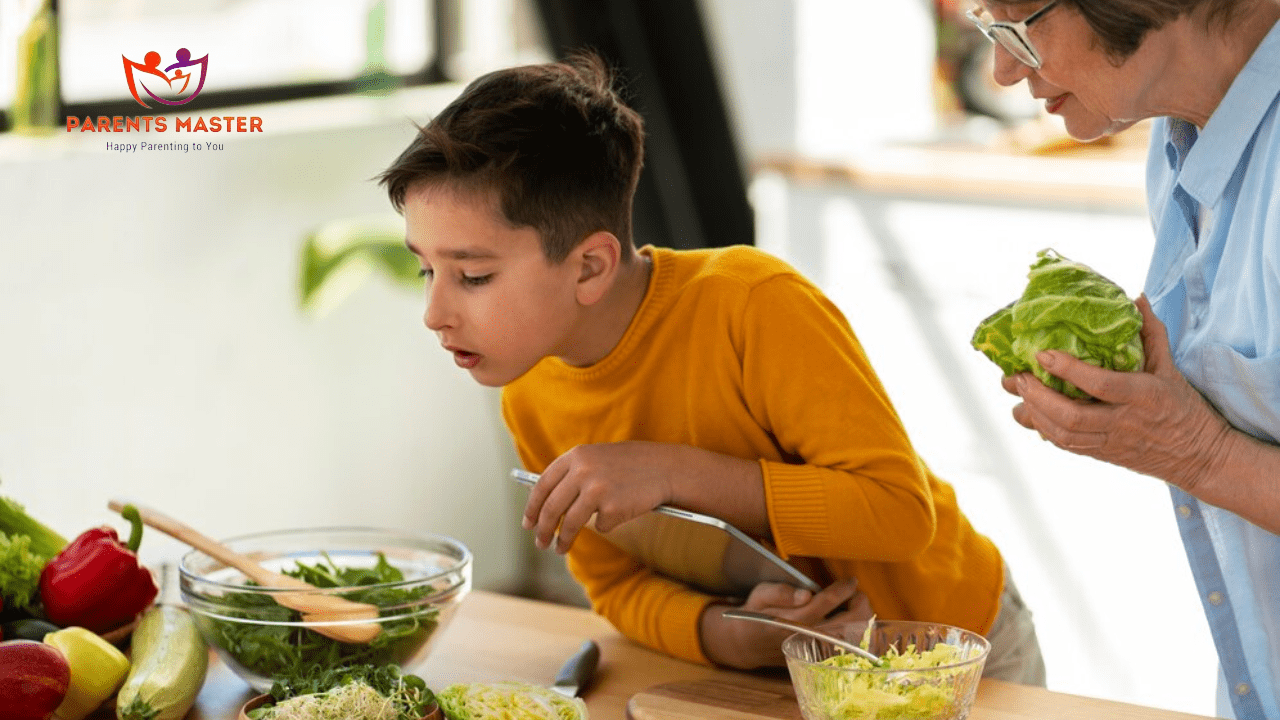9 Tips for Sneaking Veggies into Your Kids Diets

Vegetables give children energy, vitamins, antioxidants, fiber, and water. Besides, helps protect against chronic diseases later in life, including heart disease, stroke, and some cancers. In this regard, sneaking veggies into a healthy diet has become mandatory. And should comprise plenty of vegetables and a wide variety of foods from the other main food groups.
A diet rich in vegetables and fruits is amazing for lowering blood pressure, reducing the risk of heart disease and stroke, lowering the risk of eye and digestive problems, preventing some types of cancer, and having a positive effect on blood sugar to help keep appetite in check.
It’s normal to struggle to get your kids to eat their vegetables at the dinner table. But it can be easy when you consider ways to sneak in servings of vegetables without them even knowing it.
Sneaking Veggies And Kid-friendly Recipes
1. Veg Out Mac & Cheese

Cheese sauce serves as a classic way to make veggies more palatable to kids. When it’s just near the end of the pasta cooking time, add the child’s favorite vegetable, like frozen peas or corn, to the boiling water, drain, and combine it with the sauce.
Also, there’s an alternative: you will have to puree your veg into the cheese sauce. Fiber-rich sweet potato is a perfect option here as the bright orange color tricks eyes into thinking the pasta is loaded with cheese.
2. Serving veggies Up in a Smoothie
Smoothies for breakfast, a snack, or even dessert are enjoyable, and one of the best things you can do is to sneak in those daily servings of fruits and vegetables. Whirr up raw veggies, including kale, spinach, carrot, avocado and cucumber. Mix in unsweetened pumpkin puree for a smoothie to taste like pumpkin pie!
3. Veggies in Pizza without making it obvious
Trying mixing in shredded zucchini with barbecue sauce while making Barbecue Chicken Pizza. For pepperoni Pizza, make lycopene-rich tomato sauce healthier by stirring in canned, unseasoned pumpkin puree. The trick would be perfect to add fiber and beta-carotene.
Also, it possesses a mild flavor and creamy texture. One cup of pumpkin puree stirred into 1/2 cup of pizza sauce is favorable for being added to 1 pound of pizza dough.
4. Veggies for Dessert
There is no point in getting all veggie servings with a side of sweets, but when you are struggling to get your child to eat their vegetables, add a boost of zucchini to the brownie.
5. Juices
As we have stated, smoothies are a perfect way to add veggies to the diet of the child, and so are juices. You can try mush vegetables and then serve them. But in case the child isn’t accepting it, you shouldn’t let him or her miss out on a vegetable and its nutrients when the texture is an issue. Make juices with veggies, as juices eliminate the texture from the equation entirely.
Blend fruits and vegetables together to create a nutritious juice. Naturally sweet veggies like carrots, beetroot, and ginger make perfect juices. Mix and match with options including spinach, berries, green mangoes, kiwi, and pineapple to give a child that healthy dose of nutrition. Classic options include the avocado smoothie as well.
6. Sauces
Sauces serve as a way to compliment veggies or make the veggies a little more palatable. Making sauces gives you the opportunity to whip up your child’s least favorite vegetables. Certain vegetables, when served with a sauce with the flavors, help ignore the flavors they don’t like. What you can do in that case is Take a dish they already like and substitute some of the non-vegetarian ingredients in the sauce with mushrooms and other vegetables.
Next, Chop up other healthier vegetables into unrecognizable pieces and add them to sauces. Onions, Cauliflower, spinach, and carrots are some vegetables that you can add to the sauces. These veggies add tons of health and nutritional value. Also, you can whizz up all your veggies in a blender into a smooth consistency and add that to the sauce. Make a dip with your child’s favorite or not-so-favorite veggies to enjoy with garlic croutons at snack time.
7. Baked and Roasted Dishes
An alternative to fried food would be to bake or roast the veggies. Vegetables served either boiled or in a dish don’t use a lot of oil or spice and tend to be boring for the child. In that case, you can just go with Baking and roasting veggies, bringing out the flavors of a vegetable without making it bland. You can add Vegetables to almost anything that gets baked, including lasagne or even hot pockets.
Add finely chopped vegetables, including zucchini, peppers, sweet potatoes, carrots, brinjals, and mushrooms, to nutritious recipes and substitute sugar with honey. Baking softens the veggies inside, making the dish easier to eat.
8. Shredded Veggies
Sneak veggies the child doesn’t like by shredding the veggies and adding them in. Add shredded veggies to almost anything, starting from scrambled eggs, omelets, pizzas, and noodles. Shredding veggies makes the veggies very thin. So just shred veggies and then roast them. Vegetables are finer when shredded; they become very crispy. Use these crisped-up vegetables as a topping on other dishes.
Shred zucchini into long strands using a food processor to add them to the dishes, such as noodles, topping with some veggies-based sauce. Make veggie porridge by cooking plain oats with water. Then, just add shredded vegetables. Top it up with an egg on top with a sprinkle of salt, pepper, and grated cheese.
9. Preparing Desserts with Veggies
Veggies can be made into something sweet and delicious. What you need to do is add some spinach or pumpkin puree to the pancake or waffle batter to make a colorful and healthy snack. Use honey or jaggery instead of sugar to make them healthier.
Make chocolate brownies with spinach, carrot cupcakes, chocolate brownies with black beans, beetroot fudge cakes, and even sweet potato cookies. Incorporating vegetables into dishes that have a sweet taste profile proves to be pleasantly surprising. For a change, use vegetables in your favorite drinks, including lassi or soy milk.
Final Words
Vegetables and fruit provide important vitamins, including vitamin C and folic acid. So, it isn’t at all a great idea to leave out these ingredients from being included in your child’s meal. Vegetables and fruit have other plant substances that are important to help reduce the risk of some cancers and heart disease. So, follow the tips as stated above and create a healthy plate for the child.
Know more about healthy snacks!




